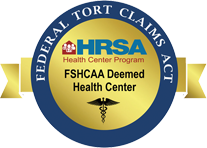We all know getting chickenpox is not fun and that it is highly contagious. Chicken pox is caused by the varicella – zoster virus. It is not usually severe, but the risk of hospitalization and death increases in adults and adolescents. It is spread easily through coughs, sneezes, and contact with the blisters of an infected person.
The most common sign of chicken pox is a rash that turns into itchy blisters all over the body. The blisters can burst, crust over, and form scabs. Scratching at the spots can lead to infection or permanent scaring. Chicken pox can spread into the mouth, throat, eyes, and other mucous membranes.
One to two days before the rash appears, your child may experience a fever, loss of appetite, headache, fatigue, or an overall feeling of being unwell. The rash goes through three stages: raised, red or pink bumps that break out for several days; small blisters that form in one day then break and leak; and finally, crust and scabs which take several days to heal. Your child can have all these stages at the same time since new bumps will continue appear even as old bumps go away.
Consult your child’s healthcare provider if you believe your child has chickenpox. Your healthcare provider will confirm if it is or is not chickenpox. They can also prescribe medicine to lessen the severity of it and treat any complications if needed. Call your healthcare provider if the rash spreads to the eyes; the rash gets very red, warm, and tender; or your child develops dizziness, disorientation, troubles breathing, a rapid heartbeat, tremors, vomiting, loss of muscle coordination, worsening cough, stiff neck, or a fever higher than 102℉; or if anyone in the household is younger than six months old or has a compromised immune system.
Several complications can result from chicken pox including bacterial infections of the skin, bones, joints, or bloodstream; dehydration; pneumonia; inflammation of the brain; toxic shock syndrome; Reye’ s syndrome (which can happen when children and teenagers take aspirin while having chicken pox); and death.
Pregnant women who have not had chicken pox, newborns, and infants whose mother have not been vaccinated or had chicken pox, adolescents, adults, smokers, people with weakened immune systems, and those taking steroids are the most at risk for complications. There is also the risk of getting shingles after you have had the chicken pox. The virus remains in your nerve cells after the skin is healed and can reactive later in life as shingles. It is more likely to appear in older adults who have a weakened immune system.
The best prevention for chicken pox is to get the varicella (chicken pox) vaccine. The CDC estimates that the vaccine provides complete protection from the virus for nearly ninety-eight percent of people who receive both doses. The first dose of the vaccine is given between the ages of twelve months and fifteen months.
The second dose is given between ages four and six. If your child did not have the vaccine at the recommended ages, they can do catch-up doses that have to be at least four weeks apart. The chickenpox vaccine has been proven to be safe and effective since it has been released. The side effects are generally mild and include redness, soreness, swelling, and rarely small bumps at the site. The vaccine is not recommended for pregnant women, those with weakened immune systems, people taking immune-suppressing drugs, and those allergic to gelatin or neomycin.
Most people who get chickenpox can manage the symptoms at home. Children will not be able to go to school or daycare if they get chickenpox. Antihistamine medications or topical ointments can help the itching. You can also try lukewarm baths, unscented lotion, and wearing lightweight, soft clothing.
If you experience complications from chickenpox or are at a risk for adverse effects, your doctor may prescribe antiviral drugs which many times will make the symptoms less severe. You can usually return to normal activities one to two weeks after being diagnosed with chickenpox.








